 W
W99 Francs is a 2000 novel by French writer Frédéric Beigbeder. The book was released in France on August 2000 through Grasset & Fasquelle and has since been re-released under the titles € 14.99 and € 5.90. Shortly after the book's initial release Beigbeder was fired from his advertising job after his employers read 99 Francs.
 W
WÀ l'ami qui ne m'a pas sauvé la vie is a novel by Hervé Guibert first published by Gallimard in 1990. It is a frank portrayal of the physical and psychological suffering caused by AIDS. The book is considered to be a work of autofiction as although it clearly mimics the last years of Guibert's own life, names are changed and it makes no claims to be truthful to real events.
 W
WAdolphe is a classic French novel by Benjamin Constant, first published in 1816. It tells the story of an alienated young man, Adolphe, who falls in love with an older woman, Ellénore, the Polish mistress of the Comte de P***. Their illicit relationship serves to isolate them from their friends and from society at large. The book eschews all conventional descriptions of exteriors for the sake of detailed accounts of feelings and states of mind.
 W
WAlabama Song (2007) is a French-language novel by French novelist Gilles Leroy. It is a fictional autobiography of Zelda Fitzgerald, wife of F. Scott Fitzgerald. Although Gilles Leroy always insisted the book was not a biography but a novel, it relied on a large body of factual research. It won the Prix Goncourt in 2007, one of the most important French literary awards.
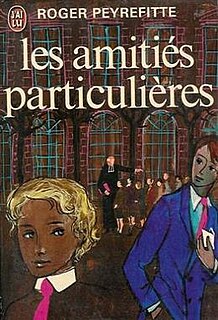 W
WLes amitiés particulières is a 1943 novel by French writer Roger Peyrefitte, probably his best-known work today, which won the Prix Renaudot. Largely autobiographical, it deals with an intimate relationship between two boys at a Roman Catholic boarding school and how it is destroyed by a priest's will to protect them from homosexuality.
 W
WAziyadé is a novel by French author Pierre Loti. Originally published anonymously, it was his first book, and along with Le Mariage de Loti, would introduce the author to the French public and quickly propel him to fame; his anonymous persona did not last long.
 W
WA Bag of Marbles is a Second World War autobiographical novel by the French Jewish author Joseph Joffo. It tells the story of his flight, as a small boy, with his brother Maurice to escape from Nazi occupied France to the Zone Libre. Joffo was refused by many publishers before being encouraged by the newly founded publishing house Éditions Jean-Claude Lattès to get the help of an editor to publish the text. The book was a phenomenal best-seller, being made into a major film two years later.
 W
WBalzac and the Little Chinese Seamstress is a semi-autobiographical novel written by Dai Sijie, and published in 2000 in French and in English in 2001. A film based on his novel directed by Dai was released in 2002.
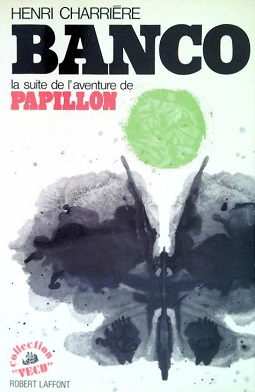 W
WBanco is a 1973 autobiography by Henri Charrière, it is a sequel to his previous novel Papillon. It documents Charrière's life in Venezuela, where he arrived after his escape from the penal colony on Devil's Island.
 W
WCannon-Fodder is an unfinished novel by the French writer Louis-Ferdinand Céline. The largely autobiographical narrative is set before World War II, and roughly continues where Céline's 1936 novel Death on Credit ended. Much of the novel disappeared in 1944. Surviving fragments have been published from 1948 and onward, the main part in book form in 1949.
 W
WCastle to Castle is the English title of the 1957 novel by Louis-Ferdinand Céline, titled in French D'un château l'autre. The book features Céline's experiences in exile with the Vichy French government at Sigmaringen, Germany, towards the end of World War II. One of the characters which appears is the actor Robert Le Vigan, a fellow collaborator.
 W
WClaudine at School is a 1900 novel by the French writer Colette. The narrative recounts the final year of secondary school of 15-year-old Claudine, her brazen confrontations with her headmistress, Mlle Sergent, and her fellow students. It was Colette's first published novel, originally attributed to her first husband, the writer Willy. The work is assumed to be highly autobiographical, and includes lyrical descriptions of the Burgundian countryside, where Colette grew up.
 W
WLes Deux Étendards is a 1952 novel by the French writer Lucien Rebatet. The narrative is partly autobiographical and set in Lyon in the 1920s. It follows two young men who are in love with the same woman; one of them is to become a Jesuit priest, while the other—the author's alter ego—is a fierce agnostic.
 W
WLa Douleur is a collection of six texts by Marguerite Duras published in 1985. Two texts are invented: L'ortie brisée and Aurélia Paris. The remaining four texts are based on lived experience. In La Douleur, her husband becomes Robert L. and others also retain the names used as resistants. Monsieur X. dit ici Pierre Rabier, recounts her association with the man who arrested her husband. In Albert des Capitales and Ter le milicien, Duras becomes Thérèse and these are accounts of the immediate aftermath of Paris being liberated, where those who sold the Jews to the Gestapo, and those who served in the Vichy militia were tried by resistance groups. In Albert des Capitales, Thérèse (Duras) extorts a confession under torture of man who sold Jews to the Gestapo. Her colleagues show their disapproval and rather than the expected summary execution, she asks D. to let him walk away.
 W
WL'Étudiante is the second novel by Vanessa Duriès.
 W
WFable for Another Time is a 1952 novel by the French writer Louis-Ferdinand Céline. The narrative recounts Céline's experiences during what seems to be a hypothetical bombing of an area of Montmartre by the allies on the days preceding D-day. The whole of the action of this fairly long narrative lasts no more than twelve hours from the beginning of an evening to the morning after. It was followed by a sequel, Normance, published in 1954.
 W
WThe First Man is Albert Camus' unfinished final novel.
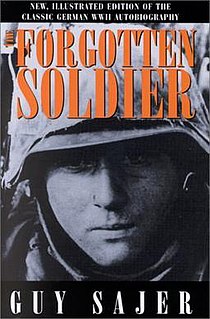 W
WThe Forgotten Soldier (1965), originally published in French as Le soldat oublié, is an account by Guy Sajer of his experiences as a German soldier on the Eastern Front during World War II. With reference to the author's ambiguous relationship to war, the book has been called "the account of a disastrous love affair with war and with the army that, of all modern armies, most loved war", being written with the "admiration of a semi-outsider". The English edition was translated by Lily Emmet.
 W
WThe Four-Chambered Heart is a 1950 autobiographical novel by French-born writer Anaïs Nin, part of her Cities of the Interior sequence. It is about a woman named Djuna, her love, her thoughts, her emotions, her doubts, her decisions, and her sacrifices. It is not considered as one of Nin's most noteworthy novels, yet it continues to be referenced in various studies and discussions regarding Nin and her body of work.
 W
WGuignol's Band is a 1944 novel by the French writer Louis-Ferdinand Céline. Set in the mid 1910s, the narrative revolves around Ferdinand, an invalided French World War I veteran who lives in exile in London, and follows his small businesses and interacting with prostitutes. It was followed by a sequel, London Bridge: Guignol's Band II, published posthumously in 1964.
 W
WIn Search of Lost Time, also translated as Remembrance of Things Past, is a novel in seven volumes by Marcel Proust (1871–1922). It is his most prominent work, known both for its length and its theme of involuntary memory; the most famous example of this is the "episode of the madeleine," which occurs early in the first volume. It gained fame in English in translations by C. K. Scott Moncrieff and Terence Kilmartin as Remembrance of Things Past, but the title In Search of Lost Time, a literal rendering of the French, became ascendant after D. J. Enright adopted it for his revised translation published in 1992.
 W
WInsatiable (2005) is an autobiographical novel from French PR worker Valérie Tasso.
 W
WJourney to the End of the Night is the first novel by Louis-Ferdinand Céline. This semi-autobiographical work follows the life of Ferdinand Bardamu.
 W
WThe Lover is an autobiographical novel by Marguerite Duras, published in 1984 by Les Éditions de Minuit. It has been translated into 43 languages and was awarded the 1984 Prix Goncourt. It was adapted to film in 1992 as The Lover.
 W
WLe Mariage de Loti is an autobiographical novel by French author Pierre Loti. It was Loti's second novel and the first to win him great fame and a wide following. It describes Loti's romantic liaison with an exotic Tahitian girl named Rarahu. It is the basis of two operasLakmé by Léo Delibes L'île du rêve by Reynaldo Hahn
 W
WLa Maternelle is a Prix Goncourt winning novel by French author Léon Frapié. It was adapted to film as La Maternelle (1933). It is a kind of autobiographical novel by proxy since its author used not his own memories, but those of his wife, Leonie Mouillefert, whom he married in 1888. The story is about Rose, an educated girl from a well off family who faces a series of tragic events that leaves her penniless and without a home. She is forced to find work as an attendant at a day-care center in Paris with 150 children of the working class. Despite working below her station she finds herself tenderly caring for them and soon they become very fond of her.
 W
WMiracle of the Rose is a 1946 book by Jean Genet about experiences as a detainee in Mettray Penal Colony and Fontevrault prison, although there is no direct evidence of Genet ever having been imprisoned in the latter establishment. This autobiographical work has a non-linear structure: stories from Genet's adolescence are mixed in with his experiences as a thirty-year-old man at Fontevrault prison. At Mettray, Genet describes homosexual erotic desires for his fellow adolescent detainees. There is also a fantastical dimension to the narrative, particularly in Fontevrault passages concerning a prisoner called Harcamone who is condemned to death for murder. Genet idolises Harcamone and writes poetically about the rare occasions on which he catches a glimpse of this character. Genet was detained in Mettray Penal Colony between 2 September 1926 and 1 March 1929, after which, at the age of 18, he joined the Foreign Legion.
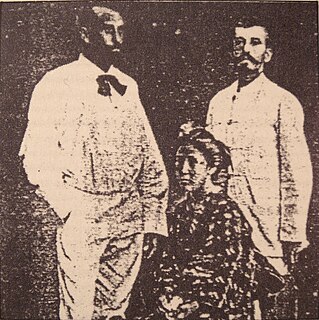 W
WMy Brother Yves is a semi-autobiographical novel by French author Pierre Loti. It describes the friendship between French naval officer Pierre Loti and a hard drinking Breton sailor Yves Kermadec during the 1870s and 80s. It was probably Loti's best-known book, and its descriptions of Breton seafaring life, on board ship and on shore, set the tone for his later acclaimed work An Iceland Fisherman (1886).
 W
WMy Father's Glory is a 1957 autobiographical novel by Marcel Pagnol. Its sequel is My Mother's Castle. It is the first of four volumes in Pagnol's Souvenirs d'enfance series. It is also a 1990 film based on the novel, and directed by Yves Robert.
 W
WMy Mother's Castle is a 1957 autobiographical novel by Marcel Pagnol, the second in the four-volume series Souvenirs d'enfance and the sequel to My Father's Glory. It was the subject of a film made by Yves Robert in 1990 which is faithful to the original plot but which includes material from the third book in the four-novel series, Le Temps des Secrets.
 W
WNadja (1928), the second book published by André Breton, is one of the iconic works of the French surrealist movement. It begins with the question "Who am I?"
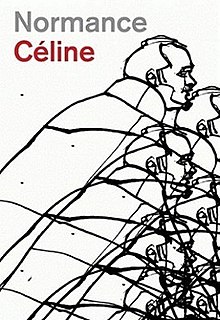 W
WNormance is a 1954 novel by the French writer Louis-Ferdinand Céline. The story is a fictionalised version of the author's experiences during the last parts of World War II, where he supported the Nazis. It is the sequel to Céline's 1952 novel Fable for Another Time, and has the subtitle Fable for Another Time II.
 W
WNorth is a 1960 novel by the French writer Louis-Ferdinand Céline. The story is based on Céline's escape from France to Denmark after the invasion of Normandy, after he had been associated with the Vichy regime. It is the second published part, although chronologically the first, in a trilogy about these experiences; it was preceded by Castle to Castle from 1957, and followed by Rigadoon, published posthumously in 1969. It was the last book Céline published during his lifetime.
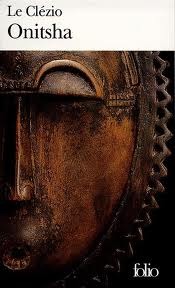 W
WOnitsha is a novel by French Nobel laureate writer J. M. G. Le Clézio. It was originally published in French in 1991 and an English translation was released in 1997.
 W
WOur Lady of the Flowers (Notre-Dame-des-Fleurs) is the debut novel of French writer Jean Genet, first published in 1943. The free-flowing, poetic novel is a largely autobiographical account of a man's journey through the Parisian underworld. The characters are drawn after their real-life counterparts, who are mostly homosexuals living on the fringes of society.
 W
WPapillon is an autobiographical novel written by Henri Charrière, first published in France on 30 April 1969. Papillon is Charrière's nickname. The novel details Papillon's purported incarceration and subsequent escape from the French penal colony of French Guiana, and covers a 14-year period between 1931 and 1945.
 W
WPoil de carotte is a long short story or autobiographical novel by Jules Renard published in 1894, which recounts the childhood and the trials of a redheaded child. It is probably in this miserable childhood story where one should look for the origins of Renard's skepticism and irony, his skill in using litotes, his dense and precise style, and his harsh method of observation. The story unfolds in a series of short sketches.
 W
WPromise at Dawn is a 1960 autobiographical novel by the French writer Romain Gary. Two films based on the novel, and sharing the same title, have been released: one in 1970 directed by Jules Dassin and another in 2017 directed by Eric Barbier.
 W
WRigadoon is a novel by the French writer Louis-Ferdinand Céline, published posthumously in 1969. The story is based on Céline's escape from France to Denmark after the invasion of Normandy, after he had been associated with the Vichy regime. It is the third part in a trilogy about these experiences; it was preceded by Castle to Castle from 1957 and North from 1960.
 W
WRobert Helmont is a novella by French author Alphonse Daudet. It is partly based on Daudet's actual experiences during the Franco-Prussian War of 1870-71, as described in the Preface. The book was originally published by Dentu in the 1873 Musel Universel but received little notice. It was re-published in 1891 with illustrations by "Picard and Montégut". The forest Sénart is the same described in his novel Jack and contains some of the same characters.
 W
WThe Safety Matches, also translated under the title The Match Boy, is a novel by Robert Sabatier, published in 1969 by Albin Michel and translated into English by Patsy Southgate in 1972.
 W
WThe Sexual Life of Catherine M. by the art critic Catherine Millet was published in the author's native French in 2001. An English translation by Adriana Hunter was published in 2002. Sexual Life was the subject of mild controversy on both sides of the Atlantic. It was reviewed by Edmund White as "the most explicit book about sex ever written by a woman." The book won the Prix Sade in France.
 W
WShe Came to Stay is a novel written by French author Simone de Beauvoir first published in 1943. The novel is a fictional account of her and Jean-Paul Sartre's relationship with Olga Kosakiewicz and Wanda Kosakiewicz.
 W
WThe Ties That Bind is the only complete novel by the French author Vanessa Duriès.
 W
WViper in the Fist is a novel by Hervé Bazin.
 W
WW, or the Memory of Childhood, is a semi-autobiographical work of fiction by Georges Perec, published in 1975. Perec's novel consists of alternating chapters of autobiography and of a fictional story, divided into two parts. The autobiographical thread is a collection of uncertain memories, as well as descriptions of photos which preserve moments from Perec's childhood. The memories in the first part of the book lead up to Perec's separation from his mother when he was evacuated in the Second World War. The second part recollects his life as an evacuee. The adult narrator sometimes provides interpretations of the childhood memories, and often comments on details of the memories which his research showed to be false or borrowed.
 W
WWhite Dog, released in France as Chien Blanc, is a non-fiction autobiographical novel written by Romain Gary. Originally published as a short story in Life in 1970, the full novel was published in 1970 in French in France by Éditions Gallimard. Gary's English version of the novel was published in North America in the same year by New American Library. The novel provides a fictionalized account of Gary and his wife's experiences in the 1960s with a stray Alabama police dog trained to attack black people on sight, and their attempts to have the dog reprogrammed.
 W
WYour Father's Room is a 2004 novel by the French writer Michel Déon. It is set in Paris and Monaco in the 1920s and follows a young boy, Édouard, called Teddy. The book is a fictionalised autobiography based on Déon's childhood.